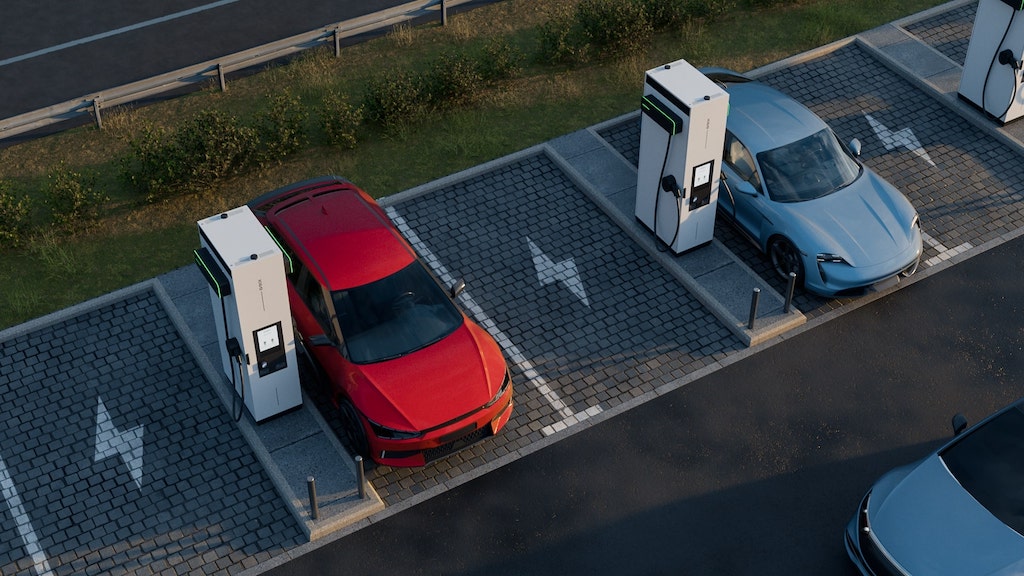
DC rapid-charging infrastructure is being installed at an exponential rate and is crucial to the improved viability of public charging for increased EV adoption. However, return on investment into the industry can take time to achieve, which is why many choose to utilise a range of different revenue streams, to maximise the money made from DC charging.
The three key revenue streams for DC rapid-charging are:
- Collect direct charging fees
- Collaborate with businesses, property owners, and government bodies
- Leverage increased customer spend
Direct charging fees are the fees the operator or owner of a DC rapid-charging station charge customers for electricity. There are various different ways to model the price of electricity at charge points, including: by energy used, by time spent charging, a combination of both, and by subscription.
Collaborations with other businesses include any partnership made to reduce initial costs or increase revenue generation. These collaborations can include the installation of DC rapid chargers at ‘destination businesses’ to attract more and new customers to the area; advertising partnerships; exclusivity deals with EV fleets; and subsidised partnerships with government green initiatives.
Increased customer spending can be encouraged in tandem with the increased time they spend on site, waiting for their EVs to charge. The availability of new high-quality, high-value services combined with a convenient charger location may result in the customer spending more than they would if visiting the same location in an ICE vehicle.
To give an idea of how much monthly revenue a DC charging could generate from direct charging fees, we’ve added a simplified overview that highlights 3 different business scenarios. Click here to view the table right away.
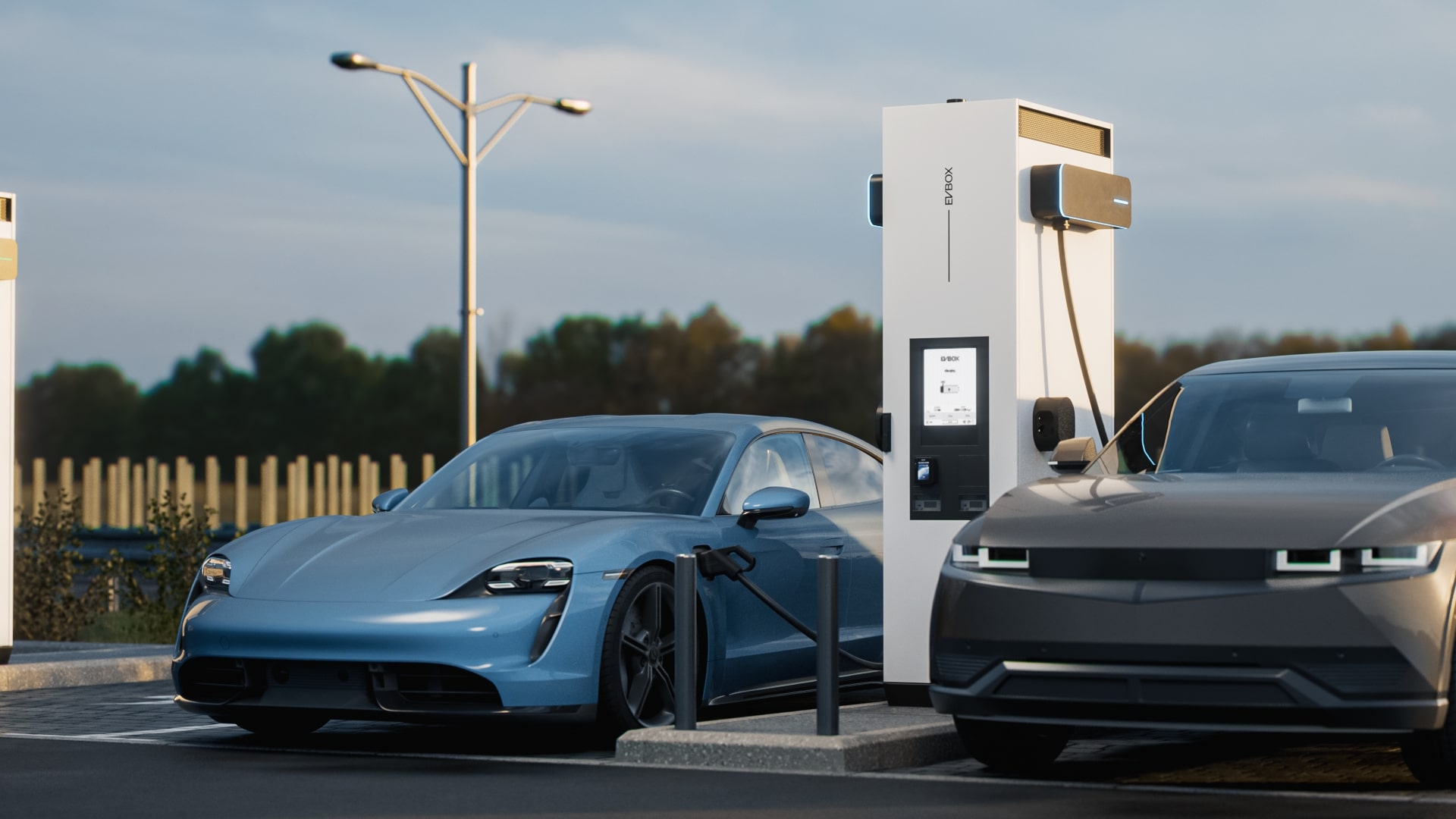
The opportunities of the rapid EV charging market
The EV-charging infrastructure market in the UK is predicted to be worth a staggering £7 billion by 2030, a sevenfold increase from 2021 at a CAGR of 25%. As of 1 October 2023, there were 49,220 public electric vehicle charging devices installed in the UK, within which, 8,908 had 50kW of power or above, representing 18% of all charging devices in the UK.
Acquiring DC charging equipment requires a steep investment, rapid and ultra-rapid public charge points typically cost upwards of £25,000, excluding additional commissioning and electricity network connection costs. In the long run, however, DC rapid-charging stations could yield sizeable, long-reaching returns. For example, last year, BP announced that rapid charging was on the cusp of becoming more profitable than filling up a petrol car.
At present, the EV-charging infrastructure industry is dominated by players with direct experience and expertise in the technology. These include charge point operators (CPOs) and owners, e-mobility service providers (EMSPs), original equipment manufacturers (OEMs), and utility and energy companies.
However, according to ChargeUp Europe’s State of the Industry 2023 report, drivers will often base their on-the-go recharging decision on where they would want to spend their time waiting while their car is being charged or where they can make use of other services to best use their time.
As a result, more commercial businesses are entering the (DC rapid and ultra-rapid) charging industry – either by themselves or in partnership. Businesses including restaurants, hotels, shopping centres, supermarkets, public parking lot operators, and even sports facilities, gyms and more are getting in on the ground floor of an environmentally necessary, and ultimately extremely lucrative market.
Your business might be interested in offering rapid EV charging services, but how can you use commercial DC charging infrastructure to generate revenue?
This article explores three of the most common and important revenue streams businesses entering the DC infrastructure industry can utilise. It also discusses the true potential of these revenue streams within the wider context of the industry, its customers, and its technology.
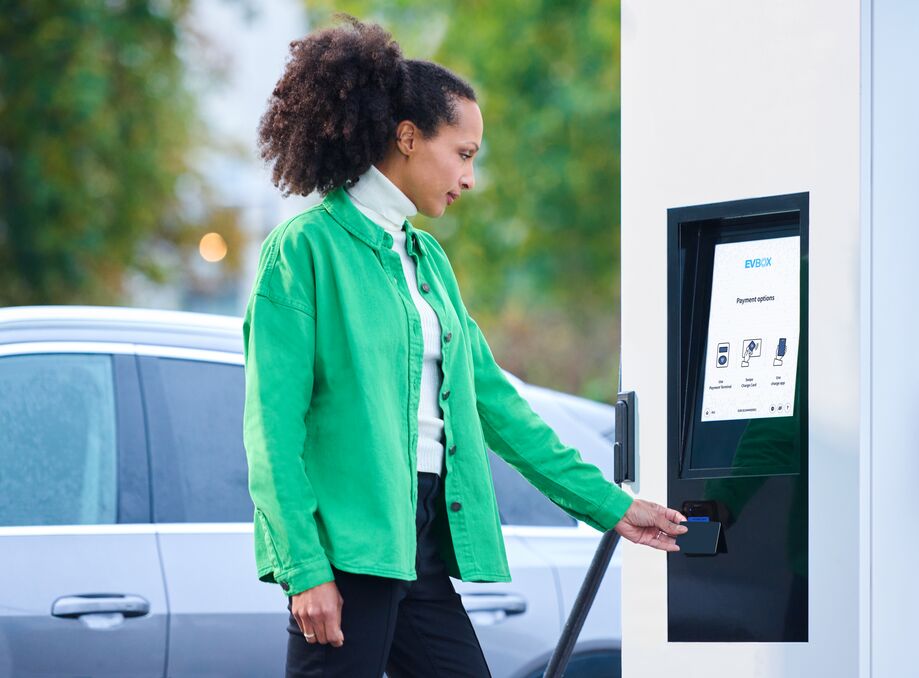
The potential revenue streams of DC charging
Studies have shown that by and large EV drivers are content to pay a premium for a faster charge. This is crucial for potential investors in DC. Because the start-up capital required for entrance into the DC charging market tends to be much higher than with AC, the willingness of drivers to pay more for rapid charging can help to facilitate a viable return on investment (ROI) projection.
With traditional petrol stations, the potential for generating revenue besides the markup cost of fuel is limited. Supermarkets and cafes attached to petrol stations do serve to generate additional income for the petrol station owner, but with refuelling stops taking next to no time at all, the customer is rarely on-site long enough to spend much of their money.
With DC charging for electric vehicles, however, the longer refuelling times, coupled with the much more diverse location potential, create a number of unique additional revenue streams.
Revenue stream 1: Direct EV charging revenue models
Unlike at traditional ICE petrol stations, which have just one pricing model – by which you pay for petrol by the litre – with DC charging there are a number of different ways you can charge customers for their charging sessions.
Charging customers for the electricity they use is the first major, and obvious, revenue stream utilised by investors in DC charging infrastructure.
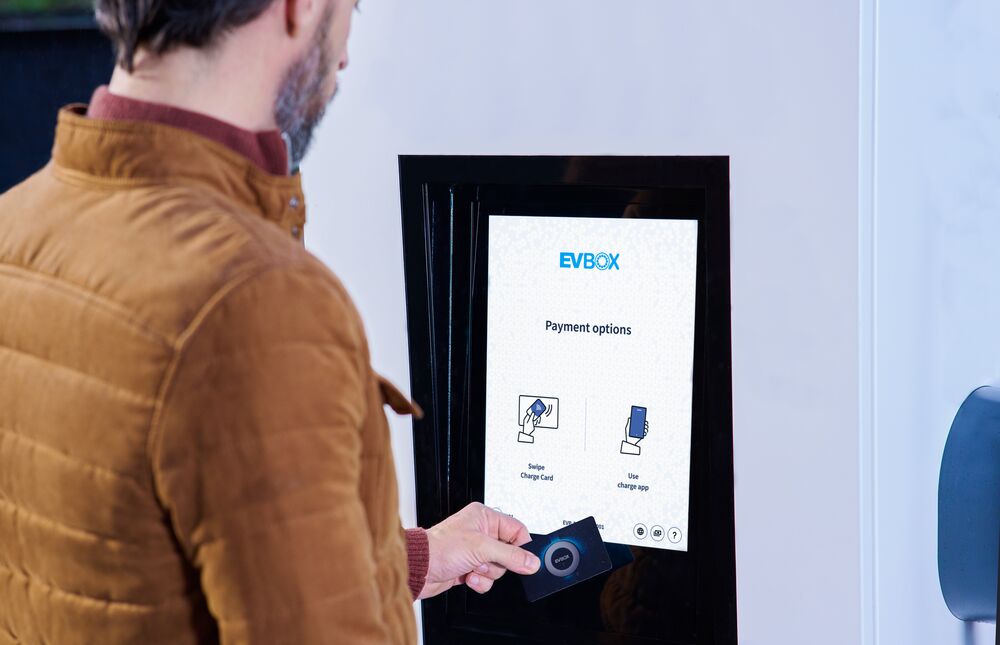
Per kWh
One of the most straightforward pricing models is to charge customers by energy consumption, or kWh used. You could set a fixed price per kWh and multiply this by the kWh used by the customer during their charge session.
For example, the average cost at rapid DC charging stations is about £0.60/kWh. Therefore, if a customer used 50kWh to charge their EV, it would cost them 50 x £0.60 = £30.
The base cost per kWh at a rapid or ultra-rapid charging station will necessarily be higher than at a slow-charging AC station. Though ultimately the amount of energy it takes to recharge the EV will remain the same in both instances, the speed of DC charging is a premium service relative to that of AC. Moreover, the costs the DC investor must recoup are higher than with AC. These two factors justify the higher price point per kWh.
Per time
A secondary pricing model you may consider when charging customers is to do so not by the energy they use, but by the time they spend recharging.
For example, if you know that your DC charger is capable of delivering 200kW of electricity, you may choose to set a higher time-based rate than a 20kW AC charger. Let’s say £120/hour. If a customer’s EV then needs 50kWh to recharge, the time they’d need would be calculated like so:
50kWh / 200kW = 0.25 hours
From there, you’d calculate the cost of their charging session by multiplying the time they spent charging by your hourly rate:
0.25 hours x £120/hour = £30 total
Contrary to AC slow chargers, where the time required to recharge an EV would be referred to as ‘hours’, for rapid charging you’d need just ‘minutes.’ But because we calculate the energy in kilowatt-hours (kWh), you’d still need to set an hourly rate, not a minute rate. Of course, you could decide to translate this rate into minutes to make it easier for your customers to understand your rates whilst at your station.
Combining per kW and per time
Some CPOs and EMSPs choose to use a pricing model which combines the two forms of session fees described above. The purpose of this is to entice customers with a reduced hourly rate, or reduced kWh price, whilst ensuring they don’t spend longer “camped out” at the charging station than they need to.
Of course, in combining per time and per kWh, you’d have to reconsider your fixed rates – e.g., £0.60/kWh and £120/hour – to reflect the combined price.
For example, you could offer £0.60/kWh + £20/hour. Meaning that a customer who requires 50kWh to fill their car and takes 0.25 hours doing so would be charged:
(50kWh x £0.60) + (0.25 x £30) = £30 total
Subscription pricing
The last major pricing model for EV charging is the subscription model, by which customers are offered a rolling monthly subscription that covers all of their charge sessions at DC charging points operated by, or partnered with, the business running the subscription.

Subscriptions are often offered by e-mobility service providers (EMSPs) in conjunction with a wide pool of CPOs. However, when DC charging stations are incorporated into that pool, the subscription costs can be increased (e.g., through a tiered paywall) wherever the customer wishes to access the premium DC charging service.
Subscription prices would still have to cover the rates set by the DC rapid charge station owners and operators, though these may be reduced through negotiation if a subscription encourages more customers to visit a single brand of station. Similarly, the monthly subscription price could be set like a tariff – as with household utility prices – based on the driver’s historic EV charging and DC charging usage.
Revenue overview from DC charging sessions
Below is a table we’ve constructed to help you estimate the sort of direct revenue you could be making from a range of rapid-charging sessions.
|
How much revenue can you earn from DC rapid charging per month?** |
|||
|
Your visitors are looking for charging... |
During a coffee break |
During a meal |
En route |
|
Estimated parking/charging time |
15-30 minutes |
0.5-1 hour |
10-15 minutes |
|
Example infrastructure |
1 DC rapid charger |
2 DC rapid chargers |
8 DC ultra-rapid chargers |
|
Estimated gross revenue from DC rapid charging per month** |
|||
|
Standard location with lower utilisation |
£4,200**** |
£1,680*** |
£19,920***** |
|
Daily station usage per charger |
4 |
2 |
16 |
|
Popular location with higher utilisation |
£8,400**** |
£3,360*** |
£39,840***** |
|
Daily station usage per charger |
8 |
4 |
32 |
|
*Actual infrastructure varies depending on the site // **Excluding any operator fees applicable. This table is only an example and may not reflect actual gross revenue earned at a specific location. // ***Calculations are based on the assumption that the DC kWh consumption will be 50kWh with each charging session at a cost of $0.56 per kWh // ****Calculations are based on the assumption that the DC kWh consumption will be 50kWh with each charging session at a cost of $0.70 per kWh // *****Calculations are based on the assumption that the DC kWh consumption will be 50kWh with each charging session at a cost of $0.83 per kWh |
|||
Additional revenue sub-streams within charge session fees
In addition to the revenue you can generate directly through DC electricity rates at your charge points, there are two other fees that you might consider charging customers.
- Session fee: A session fee is a one-off fee charged to consumers when they plug into your charge point, i.e., a connection fee. You might think of it like a service fee on a bill at a restaurant.
- Reservation fee: A reservation fee is a flexible-rate fee, fluctuating according to peak usage times throughout the day, which you can charge customers to reserve one of your available charge slots – for example, on their way home from work, or ahead of a long vacation trip.
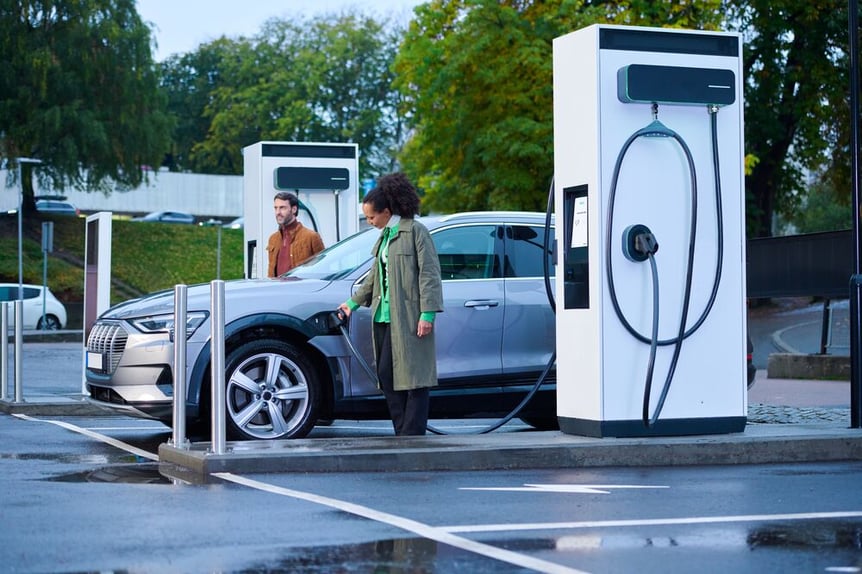
How to determine competitive pricing without compromising your profitability
With so many different enterprises entering the DC rapid-charging market, competition is stiff. The rates you set, based on whichever pricing model you choose to use, will likely have a big impact on the popularity of your fast-charging services among EV drivers. At the same time, of course, the margins in DC rapid charging are tight, so competitive pricing must not compromise your profitability or your ROI.
One of the key ways investors in DC charging are able to compete on pricing is by combining this first revenue stream – charge session fees – with other high-value revenue streams. While their cars are charging, there are a number of things you can offer your customers to generate additional revenue. Budgeted carefully enough, you can then use this additional revenue to ‘top-up’ the money you make from your charge rates, thus maintaining your project’s profitability.

Let’s take a look at these additional revenue streams.
Revenue stream 2: Partnerships and collaborations
The success of the ultra rapid-charging infrastructure industry in recent years has been linked to the interplay and collaboration between its various players, namely: CPOs, EMSPs, OEMs, charge point owners, fuel and utility corporations, and SMEs (independent and small chain businesses).
Perhaps it only makes sense that in an industry at the forefront of transitioning us into a green society, a cooperative free market approach should be key to its success. The same goes for making revenue from DC rapid charging – collaboration is crucial.
Exploring potential collaborations with property owners, businesses, and local government
We are already beginning to see CPOs and fuel retailers around the world collaborating in order to provide their customers with “a more appealing and well-rounded offering,” and some think this could prove crucial to those businesses’ success.
In a recent REVOLUTION podcast, Francois Parniere, group EV director at TSG, spoke about how cooperation is the winning strategy.
Through collaboration, enterprises are able not only to share their expertise and financial clout but also their existing customer base. Doing so can make the end-users' charging experience smoother and more enjoyable – since each component of the recharge is managed by an expert – whilst introducing the charging experience to a wider pool of EV drivers.
Collaboration can take many forms and has a range of different benefits.
Firstly, from an investment point of view, collaborations with property owners, businesses, and local governments can help to reduce upfront costs. As a result, ROI may be achieved faster. This reduces the strain placed on your various revenue streams.
Secondly, partnering with the right people can help to improve your brand image, which in turn may attract more customers to your charge points and drive up revenue. For example, an eco-friendly government-supported scheme may offer more than a subsidy incentive; it could also legitimise your status as a leader in your local area’s rapid-charging infrastructure. Moreover, you would enjoy the press attached to such a scheme.
Lastly, such partnerships often open doors to entirely new revenue streams, outwith the bounds of direct charging revenue. The average full-charge time for EVs at rapid-charging stations is approximately between 15 minutes and 1 hour. Whilst waiting, the EV user will have time to explore nearby services and products on offer. Through collaboration with other businesses – such as cafés, coffee shops, retail outlets, and the like – you can encourage greater spending in your EV customers, thus increasing your revenue.

One of the most effective forms this business collaboration takes is under the guise of ‘destination charging.’
Destination charging
Traditionally, car drivers had to fill up their cars at petrol stations en route to wherever they were going. Thanks to the reduced footprint of DC rapid-charging stations, however, charge points don’t always have to be ‘en route.’ They can also be placed at common and convenient ‘destinations’. This is called ‘destination charging,’ and is another type of collaborative revenue stream that can help attract customers both to the DC charging station itself, and the destination business.

Partnering with destination sites and businesses
One of the many benefits of destination charging and destination charging stations is that the ‘destination’ in question could be almost anywhere. Provided it is somewhere customers would typically use their cars to get to, it could benefit from installing rapid-charging infrastructure.
In a recent episode of our REVOLUTION podcast, Christina Bu, Secretary General of the Norsk elbilforening (Norwegian EV Association), highlighted the often overlooked benefits of destination charging.
Here’s a non-exhaustive list of some businesses which consumers tend to travel to, intending to spend enough time there for an EV to recharge:
- Tourist attractions like theme parks, zoos, and museums
- Restaurants and cafés
- Shopping centres and outlets
- Cinemas
- Public or government-owned institutions like hospitals
- Hairdressers, barbers, and beauty salons
By partnering with businesses like these, both the DC rapid-charging investor and the business in question stand to benefit from the relationship.
- Regular customers of the business are introduced to the rapid-charging brand
- New potential customers may be more likely to visit the business, knowing they can charge their EVs whilst there
- The DC rapid-charging supplier earns additional revenue from the extra charge sessions, and the business earns additional revenue from the extra customers
- The increased availability of accessible destination charging, over time, helps to combat range anxiety, thus driving EV adoption, and in turn increasing revenue across the board
Other partnerships
The potential for increasing your DC rapid-charging revenue through collaborations is extensive. Before we move onto our third and final revenue stream model, however, it’s worth mentioning one last key partnership you may choose to utilise: collaboration with EV fleets.

As we transition toward a green society, we will see more and more commercial and industrial vehicle fleets go electric. This means large numbers of large EVs in need of a comprehensive charging network. Partnerships with delivery fleets, taxi fleets, and ride-share enterprises like Uber, for example, could work by directing their charging needs exclusively toward your DC rapid-charging infrastructure, in exchange for reduced rates and prices.

Revenue stream 3: Increased customer spend
As we’ve previously mentioned, some of the rapid DC charging stations available can recharge an EV in as little as 11 minutes (if the car is able to handle the power of the charging station), the average rapid charge takes between 15 minutes and an hour. What this means in real revenue terms for businesses that partner with CPOs, or install rapid-charging points on-site, is the potential for increased customer spend.
Utilising your customers’ additional charging time
ICE vehicle drivers at, for example, a retail outlet would typically only spend as much time at the store as it took to purchase the few things on their shopping list. On the contrary, an EV driver destination-charging has more time to spend in-store, and as a result, may spend more money.

The business in question could be either a destination business, or choose to open an outlet connected to a DC charging station on a highway – an ‘en route’ business, if you will. Either way, by virtue of increasing the average duration of the customer’s interaction with that business, more money is likely to change hands.
Such a business has two options when installing DC rapid-charging stations: It can choose to offer the rapid-charging service to its customers for free, incentivising them to visit the location and spend more time there. Or it can charge for the service, thus earning money from its customers before they even pass through the door.

Businesses can also consider supplementing the services they already offer with high-value services tailored to EV-charging customers. That same retail store, for example, may consider opening a hairdressing salon in-store, or a café.
Location, location, location
Core to the success of this particular revenue stream is the understanding that “there is no point investing in an EV charger if its location is not convenient for EV drivers.” So said Rami Abu Hayah, CEO of CATEC Mobility when he joined our REVOLUTION Podcast. Meaning that because rapid charging’s main attraction is its convenient speeds, so too must its location be convenient – otherwise drivers won’t utilise it as much, or will be altogether unaware of its presence.
In essence, in order to maximise the revenue you bring in from DC charging stations, the location of those stations must be chosen wisely. Deciding on the right location takes time, and should take into consideration elements such as:
- Traffic patterns
- Main commuting and transport routes
- Competing public transport links
- High foot-traffic destination businesses
- On-site accessibility – e.g., ensuring that the location of the DC rapid-charging points at the destination is handy for customers, rather than tucked away around the back of the business, or in the farthest corner of the parking lot
How profitable is DC charging?
We’ve discussed the various revenue streams available to the DC rapid-charging investor, but the question remains: How profitable is it?
The good news is, DC charging can most certainly be profitable, and will become more so as technology continues to improve and EV adoption soars.
However, DC infrastructure requires a massive initial injection of capital to bring any new charge site up to operational status. For investors who wish to take full- or part-ownership of a new DC rapid-charging site, it could take up to or over 10 years to see a return on their investment. Granted, the return is likely to be sizeable, but the lead time on DC charging ROI is often enough to put potential investors off.
Thankfully, there are a range of alternative investment strategies which don’t require a large upfront investment. These can begin to yield ROI much quicker as a result.
Ultimately, your rate of ROI largely depends on the number of DC charging stations you install, the quality and accessibility of your location, your local customer demographic, and – most importantly for the purposes of this article – the additional DC charging revenue streams you utilise.
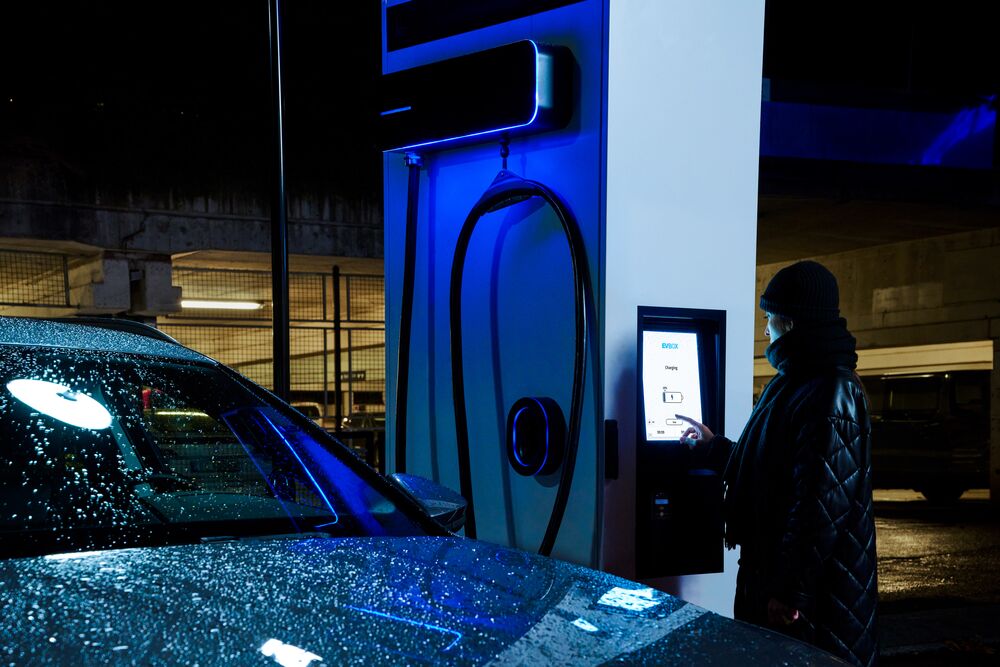
Conclusion
The potential for a diverse range of businesses – both small and large, traditionally connected to the fuel industry or not – to profit from investment in the DC rapid-charging market could be huge.
Whilst ROI can take time to manifest, a savvy combination of investment strategies and exploiting multiple revenue streams make can make investments into EV charging infrastructure both viable and lucrative.
If you’d like to learn more about our DC rapid charging solutions, click here. Or explore our blogs to find the information you’ll need to start out on your DC investment journey confidently and well-informed.
Related articles

3 revenue models for commercial rapid EV charging stations
DC rapid-charging infrastructure is being installed at an exponential rate and is crucial to the improved viability of...

How to identify profitable DC charging locations
The profitability of your DC rapid-charging site depends largely on its location, which covers factors from quality of...

CPOs, Charge Point Owners, and EMSPs explained
Charge point operators (CPOs), e-mobility service providers (EMSPs), and charge point owners play a crucial role in the...